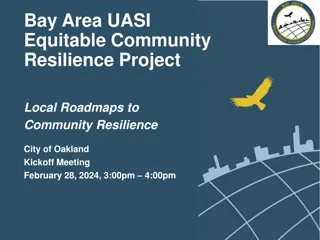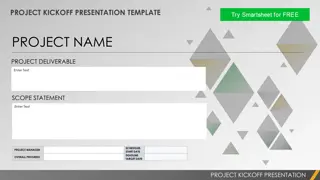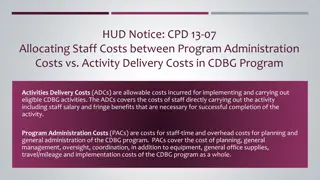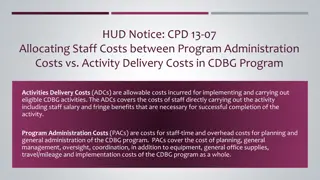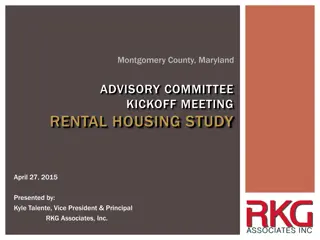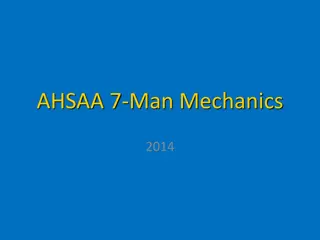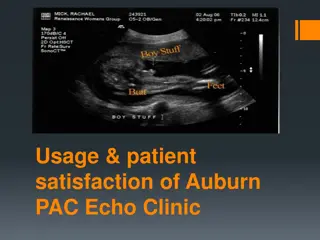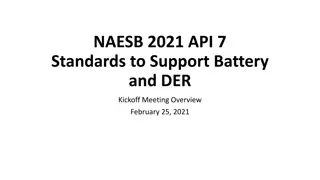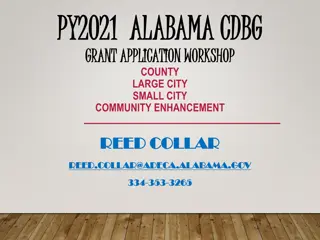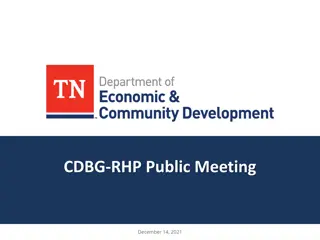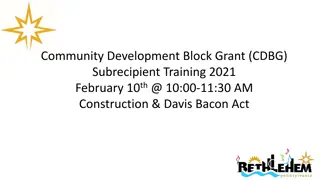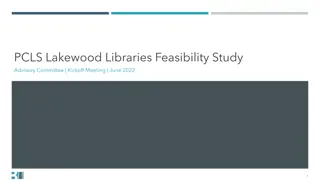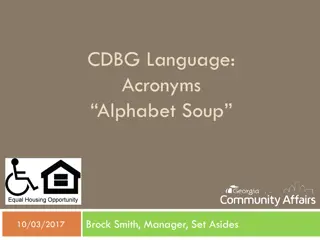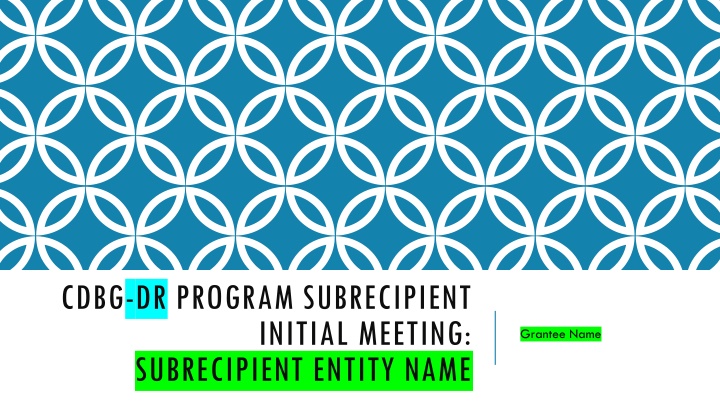
CDBG-DR Program Subrecipients and Requirements
Learn about the CDBG-DR program requirements related to subrecipients, their responsibilities, defining subrecipients, and identifying useful program resources. Explore what a subrecipient is, capacity assessment, agreement requirements, and different types of subrecipients such as governmental agencies, private non-profits, and private for-profits.
Download Presentation

Please find below an Image/Link to download the presentation.
The content on the website is provided AS IS for your information and personal use only. It may not be sold, licensed, or shared on other websites without obtaining consent from the author. If you encounter any issues during the download, it is possible that the publisher has removed the file from their server.
You are allowed to download the files provided on this website for personal or commercial use, subject to the condition that they are used lawfully. All files are the property of their respective owners.
The content on the website is provided AS IS for your information and personal use only. It may not be sold, licensed, or shared on other websites without obtaining consent from the author.
E N D
Presentation Transcript
CDBG-DR PROGRAM SUBRECIPIENT INITIAL MEETING: SUBRECIPIENT ENTITY NAME Grantee Name
OBJECTIVES Ensure a mutual understanding of the CDBG-DR program requirements related to subrecipients and the responsibilities of each party Define and distinguish what a subrecipient is and means Explain the subrecipient agreement Identify useful CDBG-DR program resources 2
AGENDA What is a CDBG-DR program subrecipient, and what is not? What that means for the CDBG-DR Grantee / subrecipient relationship Capacity assessment requirements Subrecipient agreement requirements Resources 3
DEFINING CDBG-DR PROGRAM SUBRECIPIENT
WHAT IS A SUBRECIPIENT? A Subrecipient is a Grantee s partner in disaster recovery and mitigation Determines who is eligible to receive what Federal assistance Has its performance measured in relation to whether objectives of a Federal program were met Has responsibility for programmatic decision making Is responsible for adherence to applicable Federal program requirements specified in the Federal award In accordance with its agreement, uses the Federal funds to carry out a program for a public purpose specified in authorizing statute, as opposed to providing goods or services for the benefit of the pass-through entity 5
REGULATORY REFERENCES 24 CFR 570.500(c) Public or private nonprofit agency, authority or organization, or a for-profit entity serving Microenterprises (24 CFR 570.201(o)) receiving CDBG-DR funds from the recipient or another subrecipient to undertake CDBG-DR eligible activities 2 CFR 200.93 & 200.330(a) A non-Federal entity that receives a subaward to carry out part of a Federal program 6
TYPES OF SUBRECIPIENTS Governmental Agencies - public agencies, commissions, or authorities that are independent of the grantee s government (for example, a public housing authority or a park district) Private Non-profits - usually, but not always, corporations, associations, agencies, or faith-based organizations with non-profit status under the Internal Revenue Code (Section 501(c)(3)), usually with a board of directors and an executive director in charge of daily administration Private For-profits - for-profit entities that can qualify as subrecipients when facilitating economic development by assisting microenterprises under the provisions of (24 CFR 570.201(o)) 7
WHO IS NOT A SUBRECIPIENT? Contractor Developer Business Privately- or publicly-held for- profit entity receiving funds as a beneficiary under a program (e.g., business loan program) Awarded funds for an affordable housing development Competitively procured and provides a specific scope of services Can be either a for-profit or non-profit entity Typically organized and/or formed for single purpose or undertaking (e.g., rental or homebuyer project) 8
COMPARISON OF SUBRECIPIENTS AND CONTRACTORS Subrecipient Contractor Designated by the grantee via a selection process Procured (e.g., 2 CFR 200) Selection Subject to all applicable administrative, financial and cross-cutting Federal rules and requirements Can only charge actual costs to deliver activity Subject to requirements for the specified scope of work Costs include fair and reasonable profit Applicability of requirements Must adhere to written agreement outlining responsibilities Recipient monitors all aspects of program Must deliver services identified in the contract Monitoring and performance 9
THE GRANTEE/ SUBRECIPIENT RELATIONSHIP
STATE GRANTEES AND SUBRECIPIENTS With CDBG-DR, states may carry out activities in a variety of ways: Directly Method of Distribution: By funding units of general local government (UGLGs) By funding subrecipients By funding other state level departments These agencies are not technically subrecipients but may be treated as such There must be some sort of similar agreement outlining roles, responsibilities and requirements (e.g., MOU) Regardless, only one agency may be the lead agency responsible for oversight 11
RESPONSIBILITIES OF SUBRECIPIENTS Meet the Grantee s specific selection criteria Carry out specified program on behalf of Grantee Comply with all Federal statutes, regulations and program requirements Comply with all terms and conditions of the subrecipient agreement Meet all established performance goals Ultimately the Grantee is responsible for subrecipient compliance and performance 12
SELECTING SUBRECIPIENTS Grantees may use any reasonable criteria to select a subrecipient Request for Qualifications Notice of Funding Availability (NOFA) A qualified non-profit serving a specific geography A local government 13
GRANTEE ASSESSMENT OF SUBRECIPIENT CAPACITY AND EXPERIENCE HUD holds Grantee ultimately responsible for actions and performance of subrecipient Grantee s assessment of subrecipient capacity includes at least the following critical elements Grant management history Staffing Program and activity experience Financial management and reporting systems Contractor oversight (if applicable) 14
GRANT MANAGEMENT HISTORY (TRACK RECORD) Items Grantee may consider in this assessment: Grantee monitoring reports Internal and external audits (i.e., Office of Inspector General (OIG) or Annual Single Audit in accordance with 2 CFR Part 200 Subpart F) Ability to comply with Federal rules & regulations (capacity) 15
STAFFING Items Grantee may consider in this assessment: New or experienced Turnover rate Designated time devoted to project Specified responsibilities 16
PROGRAM AND ACTIVITY EXPERIENCE Items Grantee may consider in this assessment: Knowledge of CDBG, CDBG-DR, and/or CDBG-MIT Management of similar programs/activities Other federal programs Scale Cost Duration Etc. 17
FINANCIAL MANAGEMENT AND REPORTING SYSTEMS Items Grantee may consider in this assessment: Adherence to uniform standards (2 CFR 200) Invoice and payment functionality Experience in handling draw requests, inspections 2 CFR 200 Subpart F annual audit reports Resolution of any outstanding audit findings, if any 18
CONTRACTOR OVERSIGHT Items Grantee may consider in this assessment: Knowledge of and adherence to all procurement requirements Monitoring and inspection policies and procedures in place Understanding of scope of service Oversight of all contractual requirements (Section 3, Davis Bacon, etc.) 19
SUBRECIPIENT AGREEMENTS & MOUs OR MOAs Formal means to convey all applicable requirements, roles & responsibilities (see CDBG regulations 24 CFR 570.503) including: Statement of work/scope of services Detailed budget, including all sources of funds to project or activity Period of performance Records to be maintained Reporting requirements Uniform administrative & financial requirements Cross-cutting federal requirements Provisions on suspension/termination, reversion of assets, enforcement May be amended over time 20
USEFUL CDBG-DR PROGRAM RESOURCES
DISASTER RECOVERY SUBRECIPIENT DISASTER RECOVERY SUBRECIPIENT AGREEMENT TEMPLATE AGREEMENT TEMPLATE Sample CDBG-DR subrecipient agreement template Identifies the minimum amount of content for consistency with the Entitlement and State CDBG Program requirements CDBG-DR and CDBG-MIT Grantees will also incorporate grant-specific content 22
BUYING RIGHT CDBG BUYING RIGHT CDBG- -DR AND PROCUREMENT: A GUIDE TO RECOVERY PROCUREMENT: A GUIDE TO RECOVERY Toolkit provides guidance to CDBG-DR grantees and subrecipients on how to comply with procurement requirements DR AND Access to several sample documents that can be adapted to your needs 23
PLAYING BY THE RULES: A HANDBOOK FOR CDBG PLAYING BY THE RULES: A HANDBOOK FOR CDBG SUBRECIPIENTS ON ADMINISTRATIVE SYSTEMS SUBRECIPIENTS ON ADMINISTRATIVE SYSTEMS Handbook designed to help subrecipients understand the administrative requirements that apply to the use of federal funds for the delivery of CDBG programs and activities There may also be grant-specific requirements for CDBG-DR and CDBG-MIT Grantees and their subrecipients 24
ADDITIONAL RESOURCES Grantee s CDBG-DR/CDBG-MIT Website CDBG Disaster Recovery Funds - HUD Exchange CDBG Mitigation Funds - HUD Exchange Disaster Recovery Tools and Templates Library - HUD Exchange 2020 CDBG-DR Grantees HUD Exchange 25
CONTACT INFORMATION Provide Key Personnel Name, Title, Contact Information Here Obtain reciprocal information from the session participants as well, such as through session registration, session sign-in sheets, etc. 27



